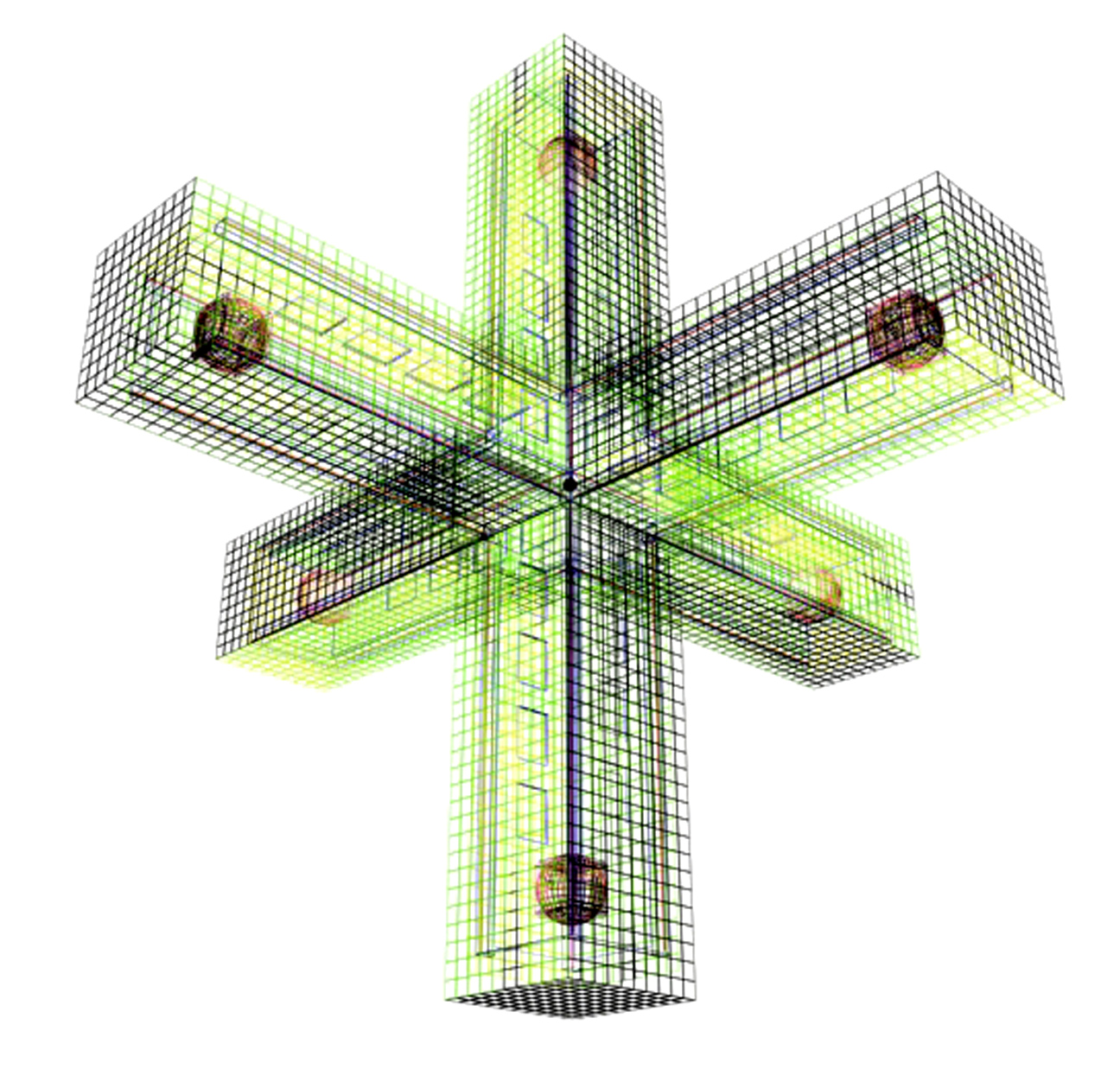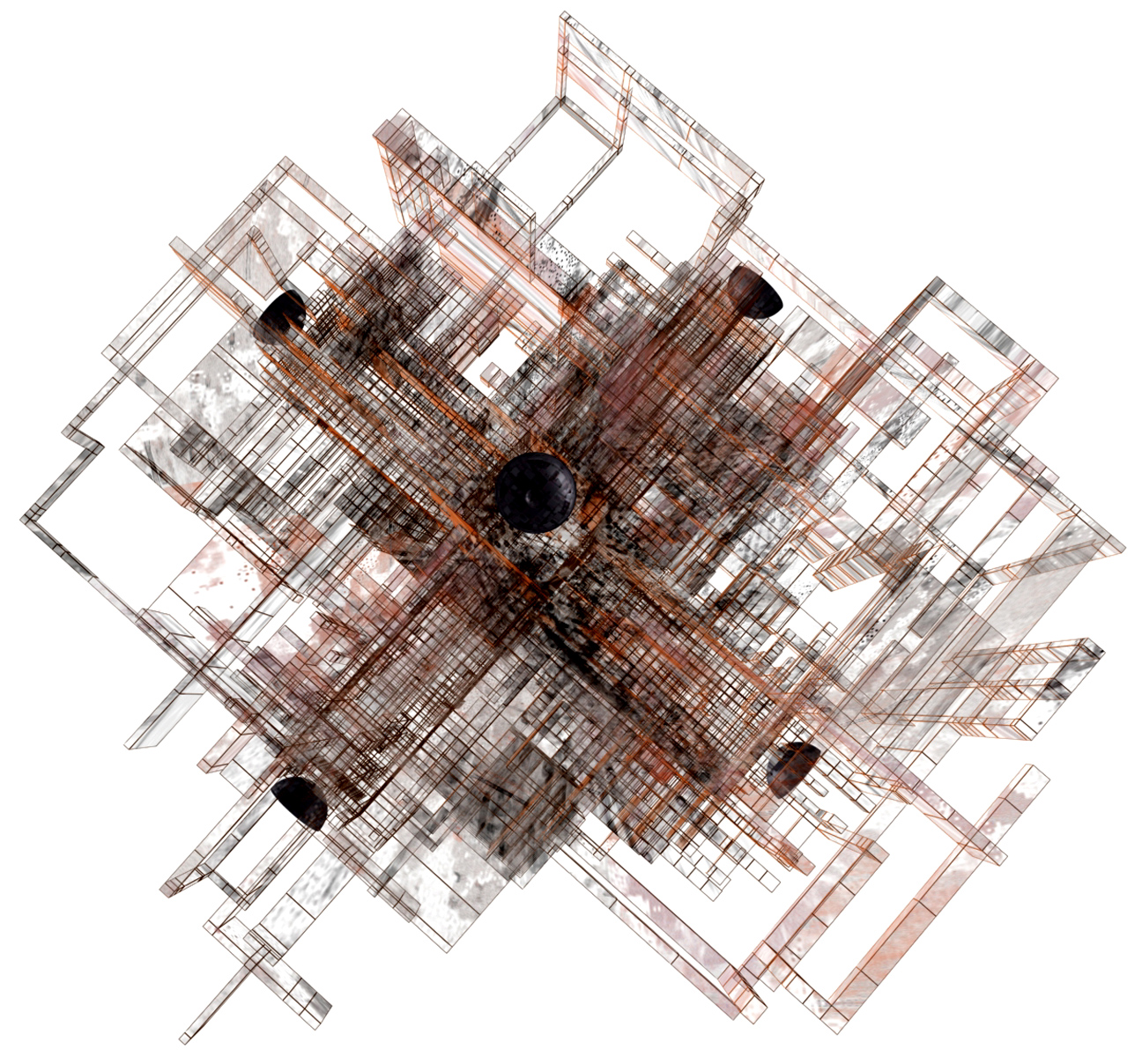Remembering the Academy
Thinking Space
This is my last step in architecture. After the thesis that was the last architectural project, I was presented the posibility of building an architectural-graphic space that was farewell to the physics of architecture. The pavilion is a virtual space that has to represent not only the sign of the image, but has to be conservative in the sense that it is a space that contains images inside the screen. The dream became a challenge. How to represent by means of the image and not of the building what we inhabit as modern and contemporary beings. The incredible thing about this possibility lies in the fact that at last the physics of architecture. Whether the laws of construction or Newton’s laws are no more determinant of constructive reality, but finally the possibility of inhabiting the image ceased to be an architectural fact to become a mere mental possibility. It is impossible for me to forget the fact that in order to inhabit the image, we have rather than being in an architectural space that presents us to the screen as a destructor of physical space. That’s enough of that. Now architecture is simply an experience that takes us away from that. Yet it makes us who we are. It is the opportunity to know if there is indeed an answer to my question.

I find this new architecture that I will call virtual. It is not something that repeats the tradition, that is to say, we can finally leave behind the physical possibility of the construction determined by variables unrelated to the image intension. There are no physical laws anymore, there is no up and down, space simply does not surround us but determines us. A fluid, almost liquid architecture that is determined not only by physical needs but by our mental ability to abstract the real world and isolate ourselves in an unrealistically projected world. The design being an experience without many historical antecedents, becomes the beginning itself. The same question. How do we inhabit the immaterial world that determines us? This question would be stupid without the background. Now it is not the pursuit of understanding but of proposing. Innovate. Finally, I return to the basics of knowing what I am so I can leave something. How do I finally face the proposal of living that I have always sought? The way is simple. The real space is so different from the mental space that I can refer to Descartes. He created mental space as a sign. The three-dimensionality of mathematical space has always been the non-architectural theme. But it is the subject of representation. Descartes made space a real, mathematical representation of experience. Therefore, I believe that building the construction of a mental space has to be derived from this principle.

The pavilion are three Cartesian axes that speak of the mental representation of space. A neutral point is the center from which the three dimensions are derived. Length, height and depth, or x, y, z, are the variables of inhabiting without surroundings. Each dimension is an axis where, like the historical representation of reality, it is a line. This line is intercected and is the first step but not the last. The pavilion showed me that architecture will never lose the embodiment of human beings no matter how hard we try. No matter how far we go from our reality, it will never be an earlier issue. Only as long as architecture allows us to miss the importance of our humanity can we question reason. If architecture were more sympathetic to our humanity, it would lead us to the understanding and understanding of difference rather than to a discourse that reaffirms identity as a differential principle.




